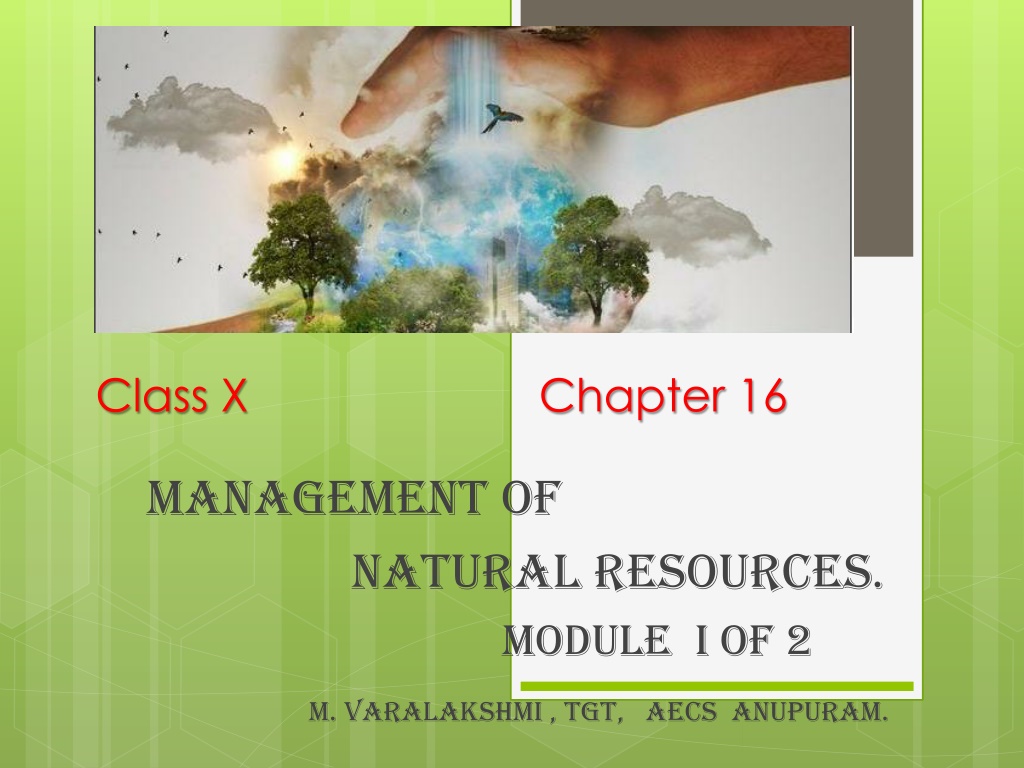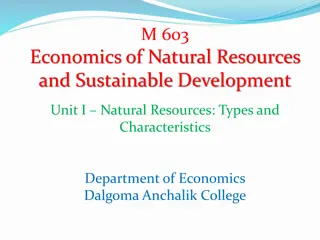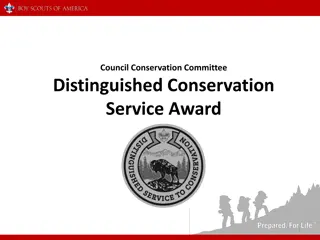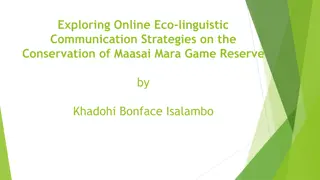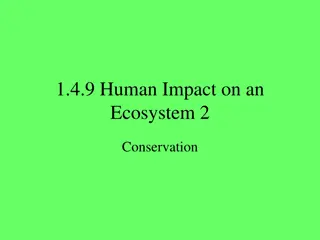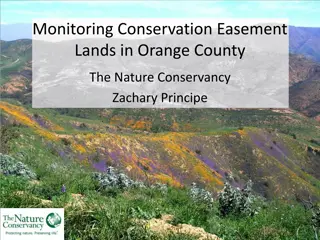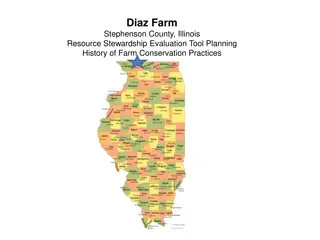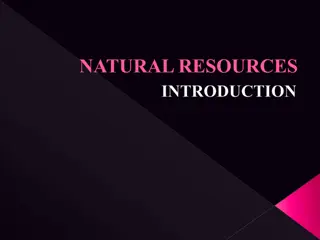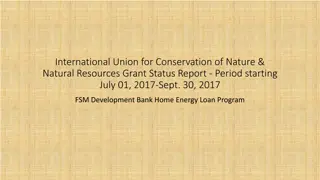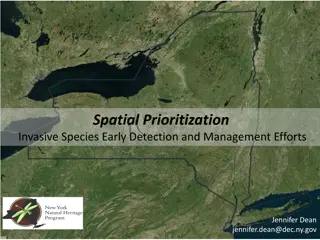Management of Natural Resources: Importance and Conservation Efforts
Understanding the significance of managing natural resources for sustaining the environment, the classification of resources into renewable and non-renewable categories, and the methods to conserve the environment through strategies like refuse, reduce, reuse, repurpose, and recycle. Highlighting the Ganga Action Plan as a crucial initiative to combat pollution in the river.
Download Presentation

Please find below an Image/Link to download the presentation.
The content on the website is provided AS IS for your information and personal use only. It may not be sold, licensed, or shared on other websites without obtaining consent from the author. Download presentation by click this link. If you encounter any issues during the download, it is possible that the publisher has removed the file from their server.
E N D
Presentation Transcript
Class X Chapter 16 Management of Natural Resources. Module I of 2 M. vARALAKSHMI , tgt, aecs anupuram.
Why Do We Need To Manage Our Natural Resources? To sustain and conserve our environment. Management also ensures the availability of these resources always- today for us and tomorrow for future generations. The resources are present in limited quantity. With the increase in population, the demand for resources are increasing. So, there is a need to manage the resources to minimize their use and preventing the exploitation of resources.
Classification of Natural Resources Natural Resources are obtained from earth and its environment. Natural resources are classified as- Renewable resources which are continuously available for use. They do not get exhausted with time. For Example, Sunlight, Wind, Water etc. Non-renewable Resources are those which gets exhausted with time. They are present in limited amount on the earth. For Example, Minerals.
Natural Resources are also classified as Biotic and Abiotic resources. Biotic Resources can be obtained from forests, animals etc. For Example, Fossil Fuels. Abiotic Resources are those that come from non-living and non-organic material.
HOW CAN WE CONSERVE THE ENVIRONMENT? There are Five important terminologies used which are as follows- Refuse: Say no to things that are offered to an individual. For Example, an individual say no to buy plastic products. Reduce: Minimize the use of anything. For e.g. minimize the use of fans, tube lights etc. Reuse: To use the things again and again is defined as reuse. Repurpose: When a particular thing cannot be used for a purpose, it can be used for another purpose. Recycle: When the material can be used to make the needed things.
An attempt to conserve a massive water body Ganga Action Plan is a massive multi - crore project implemented in 1985 which has undertaken to make the river Ganga pollution free. It was noticed that due to continuous dumping of waste into river Ganga, the number of bacteria coliform increased to an alarming level. This bacteria is otherwise found in human intestine. This has lead to pollution of the river. As people use the water for bathing, washing clothes and many other activities that affects the pH level of water and makes it contaminated.
Ganga Action Plan This plan was launched by Sri Rajiv Gandhi in 1986. It is to improve the water quality of river Ganga by treatment, diversion and interception etc. It also includes treatment of domestic sewage and industrial effluents before releasing them into water bodies.
Forests and Wildlife Forests are biodiversity hotspots. Biodiversity is defined as different types of organism present on the earth. The main aim of conservation is to preserve the biodiversity. The loss of biodiversity will lead to loss of ecological stability.
Stakeholders Stakeholders are- They are the local people living around the forests are dependent on forest and its products. Forest department of the government owns the land and also control the resources from forests. Industries that use forest produce . E.g. Timber, Paper, Resin, Gum medicines, Sports equipment industries. Wildlife and natural enthusiasts who want to conserve the nature.
Sustainable Development It is controlling the use of resources in such a way that there is an equitable availability and continuous flow of products and services for the present and future generations without any impact on the environment.
Management of Forest Local communities have been working traditionally for conservation of forests and trees. Magsaysay Award recipient Sunderlal Bahuguna gave momentum to the Chipko Andolan. It was initiated in Tehri village of Garhwal. The people of that area realized the importance of forests and decided not to give timber products to people from other areas. They stood and hugged the trees and protested against cutting them. Soon the Andolan spread in nearby areas and they also started to protest against cutting of trees.
People Participation in the Management of Forests The acceptance of locals who live in harmony with natural resources is vital for forest conservation measures. In 1972, the West Bengal forest department found that they have failed in maintaining the degraded Sal forests.
Ajit kumar Banerjee So, to overcome this, department was forced to changed the strategy. Forest officer A.K. Banerjee involved villagers in protection of 1272 hectares of badly degraded Sal forests in Arabari forest range of Midnapore district. In return he allowed villagers to collect fuelwood and fodder on payment of nominal fee.
Surveillance and policing had led to complete alienation of the people which led to clashes between forest officials and villagers. Also 25% of final harvest was given to village community.
Sal trees in a forest. Peoples involvement in protection of their forest.
Methods of Forest Conservation One of the most common method of forest conservation is silviculture. It is a method in which trees are grown and cultivated. Social forestry deals with the management and protection of the forest. Agroforestry includes land management for the cultivation of trees or shrubs. Red Data Book It is a document for recording the list of the endangered and rare species of animals, plants, fungi as well as some local species also.
End of module I Varalakshmi . M TGT AECS,ANUPURAM
